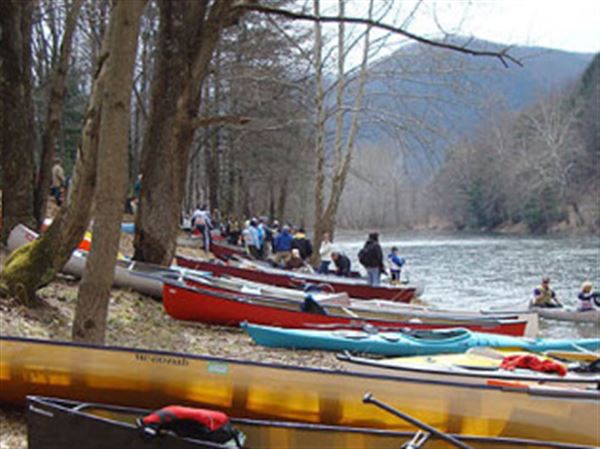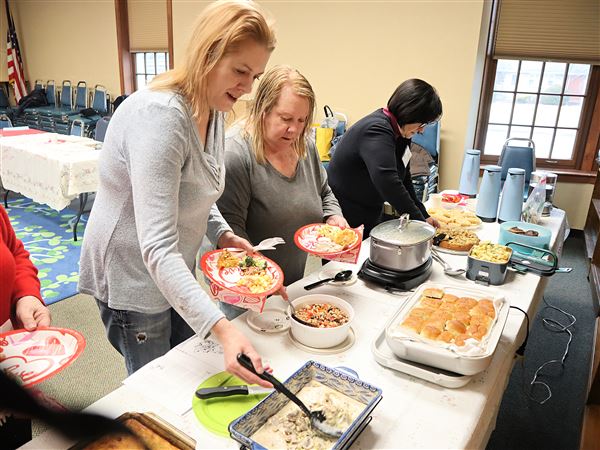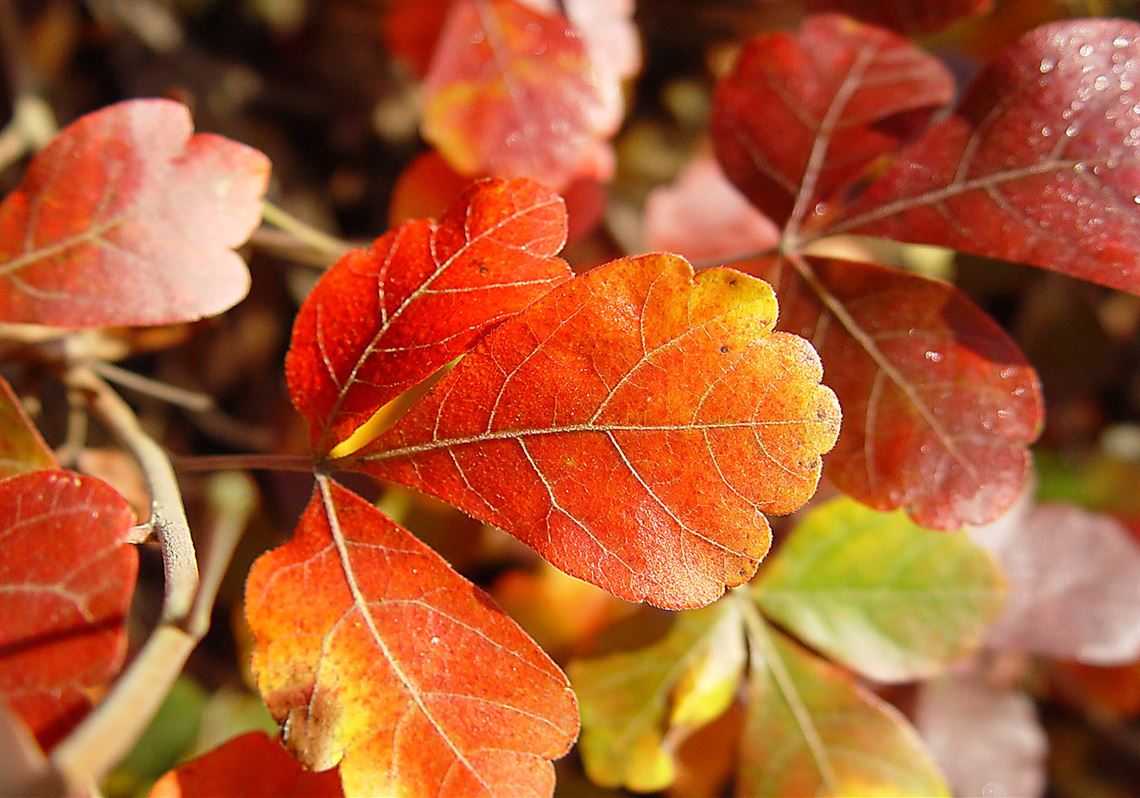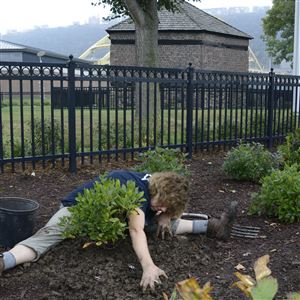Visitors to Downtown’s Point State Park probably don’t come looking for native plants, but they will find lots of them along with plant markers explaining how they can be used in home landscapes. Here are two more great choices:
Fragrant sumac (Rhus aromatica) is hard to beat in the fall, with its spectacular burgundy, red and orange foliage. The dainty yellow flowers that appear in spring are a nectar source for butterflies, and birds relish the berries that follow. Fragrant sumac is easy to grow and has no serious insect or disease issues. In full sun or part shade, it can reach 8 feet tall, but a dwarf variety, ‘Gro-Low’, is just 2 feet high and spreads readily to 8 feet across. It will grow in poor, dry soil and helps prevent erosion on embankments, making it an ideal groundcover for hillsides. Deer resistance is a bonus.
Winterberry (Ilex verticillata) shines in winter. The bright red berries of this deciduous holly cluster along the twigs of female plants, making a show-stopping statement against a snowy landscape and providing food for small mammals and birds. Winterberry is an erect, moderate sized shrub that grows 5-15 feet tall but ‘Red Sprite’ is a dwarf hybrid. Winterberry is dioecious, which means that at least one male plant is required to assure berries on the female plants. Easy to grow in full sun or part shade, winterberry will even tolerate heavy, wet and boggy soils.
Some markers in the park include stories about the plants. The delicate flower heads of white snakeroot (Ageratina altissima) that proliferate throughout the park in late summer offer no clue to its dark history. A highly poisonous shade-loving plant, white snakeroot was used by Native Americans to treat ailments from diarrhea to kidney stones to snakebite.
“Milk sickness,” which resulted from drinking the milk of cows that had grazed on this plant, was responsible for thousands of deaths on the early American frontier. Abraham Lincoln’s mother was reputedly one of its victims. It wasn’t until the 1830s that the connection between snakeroot and milk sickness was recognized.
Maureen Karl is a Penn State Master Gardener. This volunteer program supports the outreach mission of Penn State Extension and provides research-based information to the public on best practices in sustainable horticulture and environmental stewardship. For more information, contact the Penn State Extension of Allegheny County at alleghenymg@psu.edu or 412-482-3476.
First Published: June 9, 2017, 4:00 a.m.















